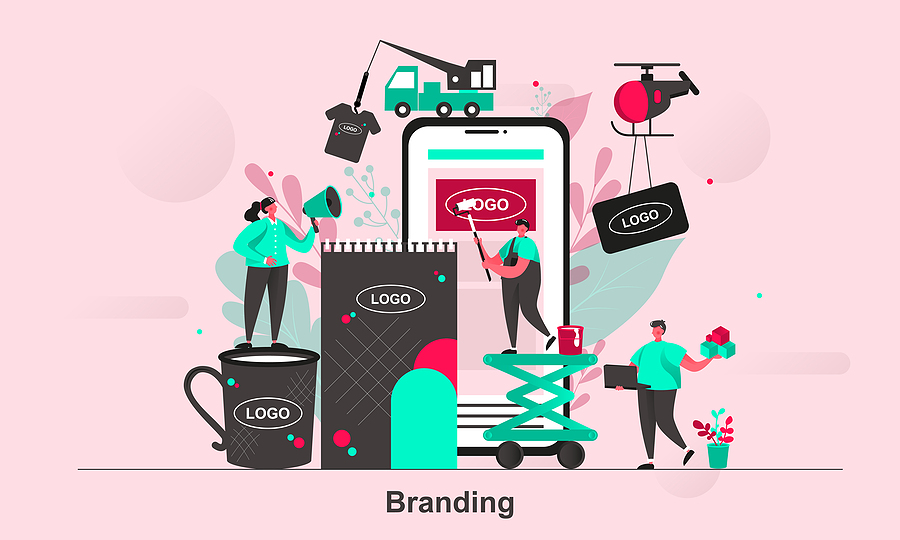
According to Forbes, the world’s top 10 brands are worth a total of $892
billion.
That’s a colossal sum for what could be considered a collection of logos.
Of course, it may seem facetious; the top ten brands, from Apple to
McDonald’s, are masters at using their brands to produce products, services,
and customer experiences that resonate with their target consumers.
The logo, colors, images, and voice of a contemporary brand identity can
communicate significant concepts.
They send out well-crafted messages to outsmart the competitors.
They elicit strong emotions in those they interact with.
Finally, the logo, identity, and brand they develop have many potentials to
communicate on several levels, making it a vital tool for commercial success.
To delve a little deeper into the significance of a logo, consider what a brand’s
primary value is, and then consider the relationship between the brand and
the logo.
We can confidently assert that a brand adds financial value to the organization
to which it belongs.
But, first and foremost, what is at the heart of a brand?
Olins discusses what brands are, how to establish them, how to make them
function, and how to keep them going in his famous “The Brand Handbook.”
A defined identity and mission, he argues, are at the heart of the brand.
It is worth noting that, despite their importance, the aesthetic aspects are
included last.
According to Olins, the logo or symbol is the most important visual element for
almost all companies, serving to “convey the essential idea of the organization
with impact, brevity, and immediacy.”
[…] The brand is encapsulated by the logo.”
Your logo is significant because your brand is significant.
Furthermore, your logo is frequently the first thing people see and remember
about your company and brand – and it will have a direct relationship with how
your brand makes them feel.
It is your brand’s primary identifier and the first and most crucial conduit for
conveying its fundamental values and message.
The collection of all aspects that a firm generates to project the correct image
to its customers is known as brand identity.
Even though these terms are sometimes used interchangeably, brand identity
is distinct from “brand image” and “branding.”
The marketing activity of actively shaping a distinctive brand is referred to as
branding.
The company’s brand is how the rest of the world perceives it.
Your brand identity is what makes your customers recognize you right away.
Your audience will identify your brand identity with your product or service.
That identity is what creates a bond between you and your consumers,
promotes customer loyalty, and shapes how they perceive your brand.
Creating a consistent and professional brand identity is an essential
component of any successful branding strategy.
In order to build a style that successfully fits a business’s aims and sends out
the appropriate message, brand identity demands research and attention to
detail.
Many companies establish standards for how their brand should be portrayed
across numerous channels once a brand identity has been created to ensure
consistency.
Some examples can be seen in our showcase of branding style guides.
What is the significance of brand identity?
- Personality: A brand identity is a visual reflection of your company’s beliefs
and “personality.”
Identity design fundamentally establishes your brand’s tone and can be
utilized to elicit various emotions in your target audience.
Your company’s overarching message and business goals should be
communicated through your brand identity. - Consistency: By creating a brand identity, you can ensure that your
message is consistent across all marketing mediums.
To create a unified branding package, each piece should have the same
fundamental styles and design features. - Differentiation: A brand identity allows you to set your company apart from
the competition and position it correctly.
Creating a professional, unique identity design will help you stand out in your
market to potential buyers.
- Brand awareness: Creating a brand identity package ensures that your
brand is prominently shown in your marketing materials, which aids in brand
recognition.
The more locations your brand appears, the more customer touch it will have
and the more memorable it. - Loyalty: Because it allows customers to draw a connection between a
product and the firm, an effective brand identity can help to build customer
loyalty and confidence in a brand.
Customers recognize your brand because of your logo, which serves as a
point of identification.
People should be able to immediately associate seeing your logo with a recall
of what your firm does – and, more crucially, how it makes them feel.
Because a good logo is a visual, aesthetically beautiful feature, it helps people
remember your brand in ways that a company name alone might not.
And, let us face it, part of your audience will forget your company’s name (do
not take it personally – it is human nature), but they’ll instantly identify your
logo with their recollections of your brand.
You will get proven, actionable insights and recommendations on getting a
unique custom logo design and a catchy business name, whether you are
establishing a new business and developing a business plan or rebranding an
existing business.
You will also receive helpful hints and insights to help you create a complete
visual brand for your company or group.
Brand identity is something that large, successful firms pay close attention to.
Many larger organizations have corporate communications teams dedicated
to establishing, maintaining, and evolving brand identity and brand image to
ensure that corporate identity supports corporate business objectives.
